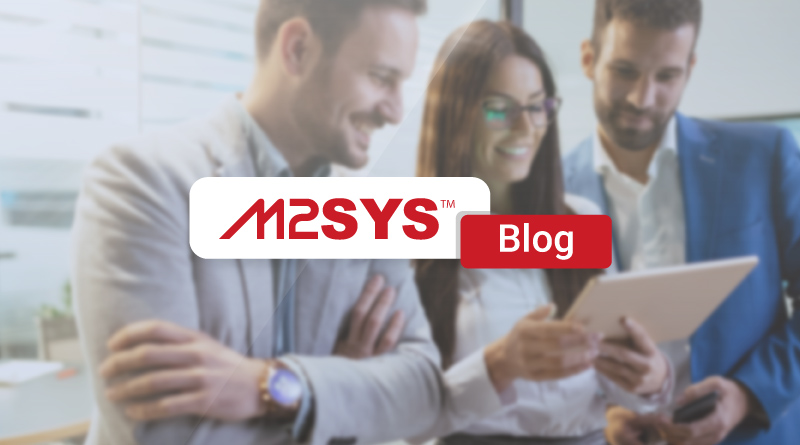Boost Border Security with Predictive Threat Modeling and Real-Time Alerts
Border agencies face evolving threats, from smuggling to unauthorized entries. Predictive threat modeling and real-time alerts help spot dangers early, enhancing safety and efficiency. By analyzing data patterns, agencies can act proactively, reducing wait times and improving operations. Centralized monitoring and AI-powered tools streamline processes, cutting costs and boosting security.
TL;DR
- Predictive Threat Modeling: Utilizes data patterns to identify risks early, enhancing border safety and efficiency.
- Real-Time Alerts: Integrates data from various entry points, ensuring immediate communication and coordinated responses.
- Centralized Monitoring: Combines information from multiple sources for comprehensive decision-making, improving national security.
- Integration Challenges: Overcoming legacy system issues is crucial for seamless data sharing and cost reduction.
- Predictive Analytics: AI-driven analysis prioritizes inspections, making border operations more effective.
- M2SYS eGov Solutions: Offers customizable platforms for secure, interoperable border control, enhancing threat detection and response.
Ready to enhance your border security with cutting-edge solutions? Contact M2SYS eGov today to explore how predictive threat modeling and real-time alerts can transform your operations.
How can border agencies stay one step ahead of threats that evolve faster than ever? In today’s world, borders face complex risks from smuggling to unauthorized entries, and old methods often fall short. Governments now turn to predictive threat modeling, which uses data patterns to spot dangers early. This shift helps agencies act before problems arise, making borders safer and operations smoother.
What Makes Predictive Threat Modeling Essential for Border Security?
Predictive threat modeling analyzes traveler data, visa details, and movement trends to find risks. For instance, if someone changes travel routes suddenly or shows odd document patterns, the system flags it. Agencies like those in the United States have seen threats rise by 25% in recent years, according to Homeland Security reports. By spotting these signs early, officers focus on real dangers instead of checking everyone equally. This method cuts wait times for legitimate travelers and boosts safety.
However, many agencies struggle with outdated systems that react only after incidents happen. Transitioning to predictive tools requires handling vast data amounts without errors. Yet, when done right, it transforms border work. Teams get alerts on potential issues, like a high-risk passenger arriving, allowing quick checks.
How Do Real-Time Alerts Improve Border Operations?
Real-time alerts connect data from airports, seaports, and land crossings into one view. When a threat appears at one spot, the system notifies all relevant teams instantly. This setup prevents gaps where risks slip through due to poor communication. For example, if customs spots suspicious cargo at a port, immigration at an airport learns about it right away, enabling coordinated action.
Border agencies often deal with high costs from delays and manual processes. A study from the World Bank shows inefficient borders can add up to 15% more in trade expenses. AI-Powered Custom Workflows reduce these issues by automating routine tasks, so officers handle only urgent cases. As a result, passenger and cargo flows speed up while security stays strong.
Why Is Centralized Monitoring Key to Effective Border Management?
Centralized monitoring pulls together info from sensors, databases, and biometric tools. It creates a full picture for decision-makers. In places like Iraq, where M2SYS helped set up identity checks at over 100 checkpoints, this approach strengthened national security through better data sharing. Such systems ensure law enforcement, customs, and immigration work as one unit, cutting response times dramatically.
Still, integration challenges persist. Different agencies use separate systems that don’t talk to each other, leading to compliance problems and higher costs. Deployment delays also slow progress, as custom setups take time. Overcoming these needs a flexible platform that adapts to specific needs without starting from scratch.
Addressing Integration Challenges in Border Systems
Integration issues often stem from legacy tech that can’t connect with new tools. This leads to data silos, where vital info stays trapped in one agency. For government teams and contractors, fixing this means finding ways to link systems securely. Interoperability between immigration, customs, and law enforcement is vital, especially for handling threats across air, land, and sea points.
Moreover, high operational costs come from maintaining multiple setups. Agencies spend billions yearly on fixes, per government audits. A unified approach lowers these expenses by streamlining data flows and reducing errors. When systems share info seamlessly, teams make faster, better choices.
How Predictive Analytics Enhances Threat Detection
Predictive border security analytics digs into patterns to forecast risks. It goes beyond static lists by using AI to review behaviors in real time. For example, if entry timings seem off or documents don’t match, the system scores the risk. This helps prioritize inspections, making borders more efficient.
Agencies worldwide adopt this to counter sophisticated threats. In the US, policy changes push for smarter tech to manage rising migration and trade volumes. Historical events, like post-9/11 security overhauls, show how data-driven methods prevent repeats of past failures.
Overcoming Deployment Delays and Compliance Hurdles
Deployment delays often happen when solutions don’t fit existing setups. Agencies need tools that install quickly and meet strict rules. Compliance with data privacy laws adds complexity, but proper systems ensure secure handling of sensitive info.
That’s where platforms like AI-Powered Behavioral Alerts come in. With over 20 years working with governments globally and in the United States, M2SYS eGov serves as a customizable platform for building and delivering secure, interoperable border control solutions. It tackles pain points by enabling real-time anomaly detection and data sharing across agencies.
Building Secure Border Solutions with M2SYS eGov
M2SYS eGov allows agencies, system integrators, and technology vendors to create tailored setups that integrate predictive threat modeling and real-time alerts. For instance, it supports biometric checks in multiple languages, preventing fraud in diverse settings. By digitizing checkpoints, it breaks down silos and provides instant access to traveler data.
In practice, this means faster responses to threats and smoother operations. Agencies build scalable systems that evolve with needs, reducing costs and delays. Whether for air, land, or sea borders, M2SYS eGov delivers practical ways to modernize without overwhelming existing workflows.
The Future of Proactive Border Security
As threats grow more advanced, predictive tools and real-time systems become standard. Governments that invest now gain an edge in safety and efficiency. By addressing core challenges with AI-Powered Role-Based Watchlist and smart platforms, agencies protect borders while supporting trade and travel.
In summary, predictive threat modeling and real-time alerts mark a major step forward. They empower teams to act early, coordinate better, and cut costs. For those ready to build stronger borders, exploring adaptable platforms opens new paths to success.
Frequently Asked Questions about Predictive Threat Modeling for Border Security
What is predictive threat modeling?
Predictive threat modeling is a method used by border agencies to analyze data patterns, including traveler data and visa details, to identify potential security risks before they occur. It allows for proactive measures to enhance border security.
How do AI-powered tools improve border efficiency?
AI-powered tools, such as AI-Powered Custom Workflows, automate routine tasks, enabling officers to focus on urgent cases. This leads to faster passenger and cargo flows while maintaining strong security measures.
Why is centralized monitoring important?
Centralized monitoring combines information from various sources, such as sensors and databases, to create a comprehensive view for decision-makers. It ensures seamless data exchange across agencies, reducing response times and improving operational efficiency.
What are the integration challenges faced by border agencies?
Border agencies often struggle with legacy systems that cannot interact with modern tools, leading to data silos. Overcoming these requires secure linking of systems across immigration, customs, and law enforcement, as discussed in our article on AI-Powered Behavioral Alerts.
How does the M2SYS eGov platform enhance border security?
The M2SYS Border Control Solution, built on the eGov platform, integrates predictive threat modeling and real-time alerts to modernize border operations, ensuring robust defense against unauthorized entry and security threats.










